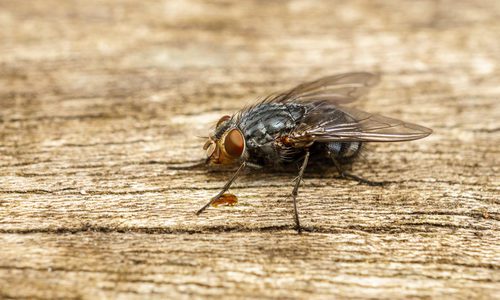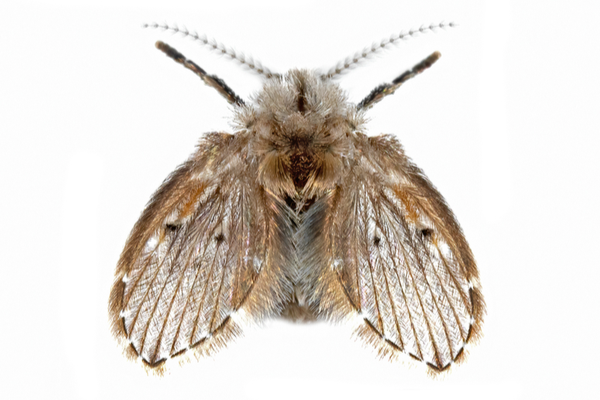
What is a fly?
There are over 16,000 individual species of fly in North America alone. In fact, flies are located in every corner of the planet except for the coldest parts of the polar ice caps. Flies that infest the U.S. include black flies, cluster flies, bottle flies, deer flies, flesh flies, moth flies, horse flies, sand flies, and blow flies.
The average lifespan of a housefly can range from days to years depending on both its location and specific species, but all flies undergo a complete four-stage life cycle. This life cycle includes: egg, larva, pupa, and adult stages. Flies survive longest in warmer temperatures (like those most commonly found in the south) and their preferred climate. They thrive between 75 and 80 degrees Fahrenheit, the temperature that many homes stay at.
Are flies dangerous?
There are over a hundred different pathogens associated with the common housefly. These potential dangers include salmonella, staphylococcus, E. coli and shigella. The presence of flies in or around your home or business can facilitate the transition of these diseases to humans and animals. They can spread hepatitis, typhoid, cholera, dysentery, and other common maladies. Long story short: flies may seem innocuous but they can be incredibly dangerous if left to infest a home or business freely.
Why are there so many flies in my house?
Different flies are interested in different things but the number one thing that brings a wide variety of flies into a home or business is the presence of organic material and decaying matter. This can mean garbage, rotting food, open beverages or decomposing flesh. There are a few specific varieties of fly that have more particular interests, such as fruit flies being drawn in by – you guessed it – fruit, drain flies looking for moist, standing water, or cluster flies being drawn in by existing earthworm burrows. Long story short, you want to keep your property clean and clear
Fly Prevention
Prevent flies by keeping your home or business clean and clear from potential sources of food, shelter, and water. Tips include:
- Keep a tight lid on garbage cans in or outside of your home
- Don’t leave food out
- Clear dishes
- Seal food in pest proof containers
- Repair windows and screens
- Remove yard debris, Check the perimeter of your property for decaying wildlife
If you find an existing breeding source of flies, call professionals to help you clean it up in a way that keeps them from returning.
How to get rid of moth flies
A moth fly is a tiny variety of fly, usually no more than 1/8 inch in size. They can be confused with fruit flies or phorid flies. Also known as drain flies, filter flies or sewage flies, moth fly identification is easy due to the moth-like hairs covering their bodies.
Moth flies live off of wet organic material and bacteria. You most commonly find them around sinks, floor drains and sewage. Adult flies lay their eggs in the grime found in these areas and the moth fly larvae hatch and feast off of the waste.
To get rid of moth flies, keep your sinks, garbage disposals and drains clean. Use a wire brush to scrub away grime or periodically pour boiling water down drains to clear them. You can also purchase commercial products to eliminate drain bacteria.
How can Gregory Pest help with my fly problem?
When you hire us to evaluate your home’s pest problem, an expert exterminator from Gregory Pest Solutions will be your full-service pest solutions provider specializing in the effective identification, extermination, and recommendations on prevention of flies from your home or business. We offer safe, effective fly control measures to ensure your fly issue goes away for good.
Fly FAQ
How long do flies live?
Most house flies live about a month. Horse flies can live twice that. Add about ten more days to include the entire fly life cycle from egg to larva to adult. Keep in mind that a female fly can lay upwards of 150 eggs per litter so, your fly problem can multiply quickly in a short time.
What are the tiny flies in my house?
There are many types of tiny flies: phorid flies, fruit flies, moth flies and even fungus gnats. A pest control professional can help you identify the type of fly in your home and implement control measures to eliminate them.
What do fruit flies look like?
Fruit flies can easily be confused with other small flies. They have tan or brown bodies, transparent wings and red eyes. They look very similar to house flies except smaller.
How do I get rid of blow flies?
Blow flies are easily identified by their metallic blue/green color. They are attracted to rotting meat and foods with strong odors. Eliminate the smell and you will likely eliminate the fly. Sprays and traps also work to catch and kill blow flies.
Do house flies bite?
No. House flies have mouthparts capable of lapping, they lack the ability to bite. Horse flies, deer flies and black flies can bite.
Where can I get help with flies?
Pests like the fly are unavoidable. You can follow all the fly prevention tips and do your best to exclude them, but sometimes they still get in. Call Gregory Pest Solutions for residential and commercial fly control across the South Eastern United States. Our technicians offer their comprehensive services to each and every state listed below.
Expert Fly Removal and Prevention Near You
Just because pests are unavoidable doesn’t mean they’re unstoppable. Schedule a service, give us a call, or request a quote by using the box below.

